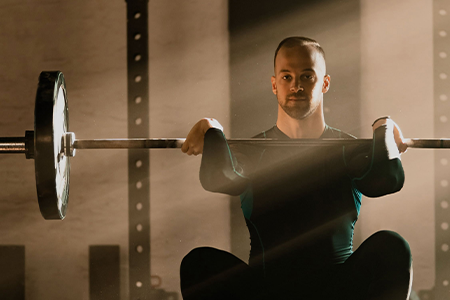Self-lifting brings additional challenges. For a start, you don’t have any kind of ‘buddy system’ in place; nobody to spot you, spur you on or offer advice. And it makes the gym session that little bit less social as you’re effectively going solo. Furthermore, you run the risk of injury and nobody being there to help you. But, with that, there are also a range of benefits to self-lifting; increased confidence and autonomy over your gym routine, finding a speed and intensity that works for you, and generally becoming the master of your own destiny whenever you work out. Here are some ways to start self-lifting without assistance.
1 – Identify your usual ‘help heavy’ exercises. By this, we mean work out which parts of your lifting routine typically require the most help from your spotter or co-lifter. Most of the time its bench presses and squats, and your spotter is needed here for safety more than anything else. From here, you need to be sensible and realise that self-lifting means you are going to have to drop a few activities. It’s not safe to be doing bench presses in your garage by yourself; if that barbell slips or you can’t hack the weight, you’re done. However, you don’t have to remove them entirely; just rework them and do them in a safe way. Any gym employee or personal trainer will be able to show you what you can do in place of your reps that need a spotter for safety. You might need to get used to it, but that’s a sacrifice you need to make.
2 – Switch out the barbell for dumbbells. You don’t have to sacrifice one part of your gym workload by using dumbbells. They’re literally designed so you can lift dead weight all by yourself. Any routine that you have with barbells can be tailored and reworked so that the same amount of weight, intensity and effort is spready out over the muscles through a different method. This also allows for more versatility; you can take dumbbells with you anywhere.
3 – Use a multigym (or home gym.) These are set up in such a way that you can emulate most weight reps, in some form, without having to have a spotter. They’re built around a solid frame with resistance from cables; in short, everything your spotter would do is done instead by a complex and safe system. You may not get the full barbell experience but you’re going to get as near to it as you can by yourself, and after the initial outlay, you need not set foot in a gym again if you don’t want to!
4 – Try ‘lower for longer’. If you are used to an intense workout that involves you lifting vast amounts of dead weight for a short period of time, you’re going to be in for a disappointment. It’s simply not safe to do this. Speak with a personal trainer or gym employee to see about swapping out a high intensity workout for a longer one involving less weight, but for extended periods of time. You might not ‘feel the burn’ as much but you will still be giving your muscles the work they need to grow.
5 – Know your limits. For most gym goers this is OK but for someone starting out without anyone to help, it is one of the most important steps to remember. A spotter will tell you if you are overloading yourself weight wise, are not holding the barbell properly or are otherwise engaging in reckless or dangerous behaviour. Self-discipline when lifting by yourself is absolutely key. You need to learn to stop when you get to your required reps, not ‘slip another few weights’ onto your bar, and give up when you feel you’re getting worn out. Remember that your spotter isn’t just there to stop the barbell falling on your chest; they’re there to spur you on, but equally, tell you when enough is enough.
Self lifting may feel like a formidable task, and granted, it’s more difficult to start with, but bear the above in mind and you’ll be flying solo in no time.

